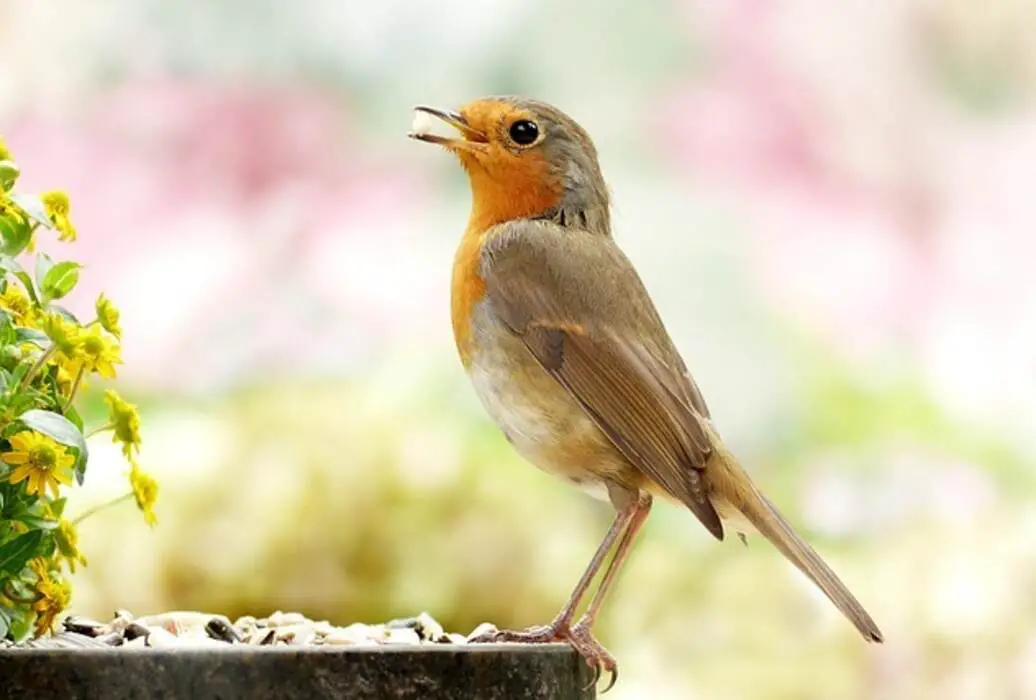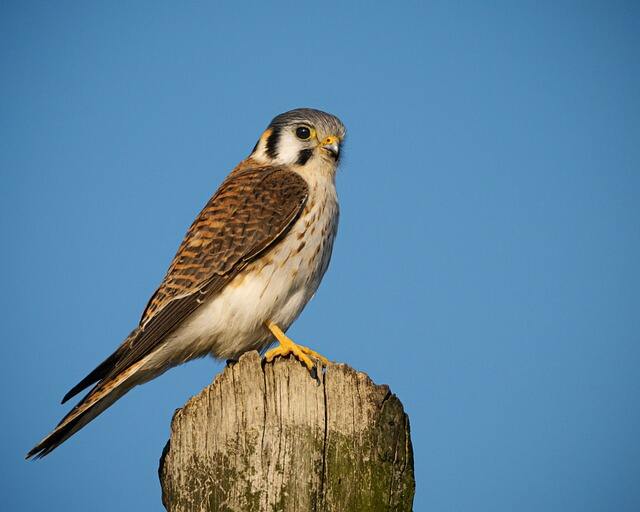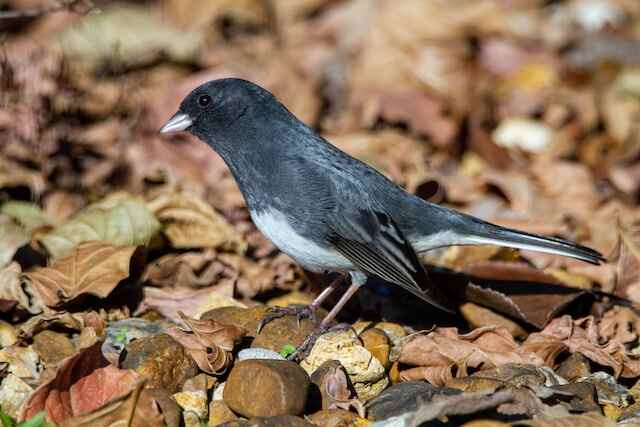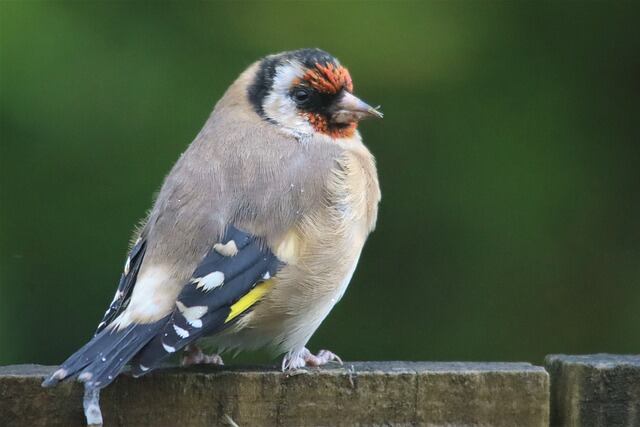Welcome to our comprehensive guide on identifying birds based on their behavior! Understanding the various behavioral patterns exhibited by different bird species can enhance your bird identification skills and deepen your appreciation for these incredible creatures.
By observing their feeding habits, flight patterns, vocalizations, social interactions, habitat preferences, and niche behaviors, you can narrow down the potential bird species and facilitate identification.
Table of Contents
- 1 Key Takeaways
- 2 How to Identify Birds by Their Behavior
- 3 Understanding the Basics of Bird Behavior
- 4 Feeding Behavior Patterns
- 5 Flight Patterns and Movement
- 6 Vocalizations and Calls
- 7 Social Interactions and Mating Behaviors
- 8 Habitat Preferences and Niche Behaviors
- 9 Seasonal and Diurnal Variations
- 10 Using Field Guides and Online Resources
- 11 Case Studies: Applying Behavior-Based Identification
- 12 Conclusion
- 13 FAQs:
- 13.1 How can I identify birds by their behavior?
- 13.2 What are some common feeding behavior patterns in birds?
- 13.3 How can flight patterns and movement assist in bird identification?
- 13.4 How can vocalizations and calls aid in bird identification?
- 13.5 What can social interactions and mating behaviors tell us about bird identification?
- 13.6 How can habitat preferences and niche behaviors contribute to bird identification?
- 13.7 How do seasonal and diurnal variations impact bird behavior and identification?
- 13.8 What resources can I use to aid in behavior-based bird identification?
- 13.9 Can you provide some case studies on applying behavior-based identification?
- 13.10 How does identifying birds by their behavior enhance the birdwatching experience?
- 14 Author
Key Takeaways
- Observing bird behavior is a key component of birdwatching and identification.
- Understanding the basics of bird behavior is important before identifying birds based on their behavior.
- Feeding behaviors, flight patterns, vocalizations, social interactions, habitat preferences, and niche behaviors are all important behavioral clues for identification.
- Field guides and online resources can be valuable tools for identifying birds based on their behavior.
- Real-life case studies can demonstrate how behavior-based identification can be applied in practice.
How to Identify Birds by Their Behavior
Identifying birds by their behavior is an important technique for bird watchers and nature enthusiasts. By observing the way birds behave, you can often identify them even if you can’t see their distinctive physical features. Some behaviors to look for include the way a bird flies, the way it perches, and the way it interacts with other birds.
For example, some birds have a distinctive flight pattern, such as the undulating flight of a woodpecker or the hovering flight of a kestrel. Other birds have unique perching habits, such as the way a kingfisher perches on a branch over water.
Paying attention to the way birds interact with each other can also be helpful, such as the way a male bird performs a courtship display to attract a mate. By taking note of these behaviors and comparing them to field guides or online resources, you can often identify birds even if you can’t see them clearly.
Understanding the Basics of Bird Behavior
Before we can effectively identify birds through their behavior, it is essential to have a solid understanding of the basics. By familiarizing yourself with these fundamentals, you will be better equipped to recognize and interpret bird behavior in the field.
Feeding Habits and Preferences
Birds exhibit a wide range of feeding behaviors, including foraging, hunting, and scavenging. By understanding these feeding behaviors, you can identify different bird species and narrow down their potential habitat. Some common feeding behaviors to look out for include:
| Feeding Behavior | Description |
|---|---|
| Probing | Birds use their beaks to probe the ground or bark of trees for insects or worms. |
| Pecking | Birds use quick, sharp strikes of their beak to capture insects or remove seeds from plants. |
| Diving | Birds plunge into water or dive from the air to catch fish or other aquatic creatures. |
| Hovering | Birds hover in mid-air and use their beaks to extract nectar from flowers. |
Flight Patterns and Movement
The way birds fly and move through their environment can provide valuable clues for identification. Understanding these behavioral nuances will help you differentiate between similar-looking bird species. Some common flight patterns and movements include:
- Soaring: Birds glide through the air with wings extended, using air currents to remain aloft.
- Flapping: Birds use a combination of wing flaps and glides to move through the air.
- Hopping: Birds take short, quick hops along the ground or between branches.
- Swimming: Some birds, such as ducks and swans, swim through water to forage for food and avoid predators.
Vocalizations and Calls
Birds communicate through a complex system of vocalizations and calls, which can provide valuable clues for identification. By familiarizing yourself with these vocalizations and understanding their context, you can narrow down the possibilities and identify specific bird species more accurately. Some common bird sounds to listen for include:
“Song”: A musical and often complex vocalization used primarily by male birds to attract mates and establish territory.
“Call”: A simpler vocalization used for a range of purposes, such as communicating with mates or warning of potential danger.
“Alarm call”: A sharp, loud call used to alert other birds of danger in the vicinity.
Social Interactions and Mating Behaviors
Birds engage in various social interactions and mating behaviors that can be indicative of their species. By observing these social behaviors, you can gather valuable information to aid in bird identification. Some common social behaviors to look out for include:
- Courtship Displays: Elaborate displays of feathers, calls, and movements used to attract mates.
- Territorial Defense: Aggressive behavior used to defend a specific area or food source from other birds.
- Flocking: Large groupings of birds that travel together for safety and foraging.
- Nesting: Birds construct specific types of nests in different locations, which can aid in species identification.
By understanding these basics of bird behavior, you will be well on your way to becoming a skilled bird identifier. In the next section, we will explore feeding behavior patterns in more detail.
Feeding Behavior Patterns
Birds exhibit a wide variety of feeding behaviors that can provide valuable clues for identification. Understanding these behaviors can help you narrow down the potential bird species and make more accurate identifications. Here are some bird behavior identification tips related to feeding:
- Probing: Birds that probe typically use their bills to poke and search for insects in the soil or bark of trees. Woodpeckers are a great example of birds that use probing to forage for food.
- Pecking: Birds that peck usually strike the ground or tree trunk repeatedly in search of food. This feeding behavior is common among species such as woodpeckers, flickers, and sapsuckers.
- Diving: Birds that dive, such as gulls and pelicans, plunge into water to hunt for fish, crustaceans, and other aquatic prey. This behavior is often observed near bodies of water.
- Hovering: Birds that hover, such as hummingbirds, can remain suspended in the air while feeding on nectar from flowers or insects. This behavior is distinctive and easy to spot.
- Snatching: Birds that snatch typically grab prey, such as fish or small rodents, from the ground or water. Bald eagles and Ospreys are known for their snatching behavior.
By observing these feeding behaviors and understanding their context, you can gather valuable information to aid in bird identification. Keep these techniques for recognizing birds by behavior in mind while birdwatching, and you’ll be well on your way to becoming a skilled bird identifier!
Flight Patterns and Movement
Birds have a variety of ways of moving through different environments, and these movements can provide important clues for identifying them. Understanding these behavioral nuances is critical for differentiating between similar-looking bird species.
Some birds soar, while others glide, flap, or hover. Hopping, walking, and even swimming are other distinctive movements that birds employ. These variations can be caused by the bird’s body structure, wing shape, and flight style.
For example, birds with broad wings and a short tail, such as eagles, hawks, and ospreys, soar with ease, using the thermals to their advantage. On the other hand, smaller birds, such as swallows and swifts, have longer wings and more pointed tails, allowing them to fly with great agility and speed. Water birds, such as ducks and swans, swim gracefully in the water and waddle on land.
Observing a bird’s flight pattern, whether it is soaring, flapping, or gliding, can provide crucial information in identifying its species. Similarly, recognizing specific movements, such as hovering or hopping, can narrow down the potential bird species in a given area.
Flight Pattern Tips:
- Use a pair of binoculars to observe the bird’s flight pattern from a safe distance.
- Pay attention to the bird’s wing shape and body structure to determine how it is moving through the air.
- Watch for any distinctive movements, such as hovering or diving, which can help identify the bird species.
- Consider the bird’s location and habitat, as different species may have specific flight patterns and movements unique to their environment.
By keeping these tips in mind and studying the flight patterns and movements of various bird species, you can become a more skilled bird identifier.
Vocalizations and Calls
One of the most fascinating aspects of bird behavior is their complex system of vocalizations and calls. Birds communicate with each other using a wide range of sounds, from melodic songs to harsh calls and alarm signals.
Identifying bird species through vocalizations and calls requires a keen ear and a deep understanding of bird behavior. Songs are typically longer and more complex than calls, and are often associated with mating behaviors. Calls, on the other hand, are shorter and simpler, and can be used for a variety of purposes, including warning of danger and communicating with other birds in a flock.
Understanding the context of a bird’s vocalization is crucial for accurate identification. For example, a bird’s territorial call may sound similar to its alarm call, but the former is usually heard during breeding season while the latter is a response to a perceived threat. By decoding bird vocalizations and understanding their meanings, you can narrow down the possibilities and identify specific bird species.
Social Interactions and Mating Behaviors
Birds are highly social creatures that engage in a variety of interactions with their own species and others. By observing these behaviors, you can gather valuable clues to aid in bird identification.
Recognize bird species through behavior: Many bird species have distinct social behaviors that can help narrow down their identity. For example, the American Goldfinch has a unique undulating flight pattern and travels in large flocks during the non-breeding season.
Behavioral clues for bird identification: Courtship displays are a great way to differentiate between similar-looking bird species. For instance, the Sage Grouse performs an elaborate courtship ritual in the early morning hours during the breeding season.
Other social behaviors that can be indicative of a bird’s identity include flocking patterns, territorial defense, and nesting behaviors.
Understanding bird behavior for identification: By paying attention to social interactions and mating behaviors, you can deepen your knowledge of bird behavior and improve your identification skills. For example, the African Penguin can be identified by its distinctive braying call and its tendency to mate for life with a single partner.
Example:
“I saw a group of about 20 birds hopping and chasing each other around a large tree. Their feathers were brown and white, and they had a distinctive tuft of feathers on their heads. Based on their behavior, I identified them as a group of Tufted Titmice.”
Habitat Preferences and Niche Behaviors
Understanding the habitat preferences and niche behaviors of different bird species is key to identifying them by their behavior. Birds adapt to various environments and display unique behaviors related to their choice of habitat.
For instance, some bird species have specific nesting sites they prefer, such as tree cavities, shrubs, or grasses. The type of vegetation they forage in can also provide clues for identification. Some birds, like the American Goldfinch, have a preference for thistle seeds, while others, like the Eastern Bluebird, feed on insects found on the ground.
Migration patterns also impact bird behavior and identification. Some bird species migrate long distances and exhibit specific behaviors during this time. For example, the Semipalmated Sandpiper feeds primarily on mudflats during migration, while the Tree Swallow takes advantage of large insect swarms for feeding.
By considering these habitat-related factors and behaviors, you can narrow down the potential bird species in a given area and improve your chances of accurate identification.
Seasonal and Diurnal Variations
Observing bird behavior can vary depending on the time of day and season. Breeding and migration patterns, as well as daily activity cycles, can all impact the way birds behave.
In the early morning and late afternoon, many bird species are more active and vocal. This is known as the “dawn chorus,” and it can be an excellent time for birdwatching. During the day, birds may retreat to shady areas to rest or conserve energy, making them less visible.
During the breeding season, birds often engage in courtship displays and other mating behaviors, which can be distinctive for specific species. Migration patterns can also impact bird behavior, as many species adjust their feeding and nesting habits depending on their location and the time of year.
To effectively recognize bird species through behavior, it is essential to consider these seasonal and diurnal variations and how they impact bird behavior patterns.
Example:
During the breeding season, male American Goldfinches can be observed performing undulating flight displays and singing acrobatically from elevated perches. These behaviors are distinctive for this species and can help differentiate them from other finch species.
By paying attention to seasonal and diurnal variations and their impact on bird behavior, you can make more accurate identifications and gain a deeper understanding of the fascinating world of avian behavior.
Using Field Guides and Online Resources
Field guides and online resources can be incredibly helpful tools for identifying birds based on their behavior. Field guides are often organized by bird species, providing detailed descriptions and illustrations of each species’ physical characteristics, behaviors, habitats, and geographic ranges.
When using a field guide for behavior-based bird identification, focus on the behavioral information provided in the text and illustrations. Look for specific behavior patterns, such as flight styles, vocalizations, and feeding habits, to help narrow down the potential bird species you are observing.
Online resources can also be valuable tools for behavior-based bird identification. Many websites offer bird identification assistance, ranging from comprehensive databases to simple identification quizzes. Some websites also provide audio recordings of bird vocalizations, which can be especially helpful when trying to identify birds based on their songs or calls.
When using online resources for bird identification, be sure to rely on reputable sources and cross-reference information from multiple sources to confirm identification. Some recommended online resources for behavior-based bird identification include the Cornell Lab of Ornithology’s All About Birds website, the Audubon Society’s Guide to North American Birds, and the eBird database maintained by the Cornell Lab of Ornithology and National Audubon Society.
Case Studies: Applying Behavior-Based Identification
Let’s explore some real-life examples of how behavior-based identification can be applied in practice.
The American Goldfinch
The American Goldfinch is a common sight across North America, particularly during the summer months. These birds are known for their bright yellow plumage and distinctive flight patterns.
One way to identify American Goldfinches is to observe their feeding behavior. They have a unique way of clinging to the stems of plants and using their beaks to extract seeds from the seedheads. This feeding behavior is known as “thistle-feeding” and is a clear indication that you are observing an American Goldfinch.
The Pileated Woodpecker
The Pileated Woodpecker is a large bird found primarily in wooded areas across North America. These birds are known for their loud, distinctive calls and their ability to excavate large cavities in trees.
To identify a Pileated Woodpecker, look for distinctive foraging behavior. They use their strong bills to excavate deep holes in trees in search of insects. When foraging, they also leave distinctive rectangular-shaped holes in the bark of trees. By recognizing these feeding and foraging behaviors, you can be sure that you are observing a Pileated Woodpecker.
The Black-capped Chickadee
The Black-capped Chickadee is a small, highly vocal bird found across North America. These birds are known for their distinctive black cap and white cheeks.
To identify a Black-capped Chickadee, listen for their vocalizations. These birds have a complex system of calls and songs that they use to communicate with each other. By familiarizing yourself with these vocalizations, you can narrow down the potential bird species and identify the specific bird you are observing.
These case studies demonstrate the importance of observing behavior when identifying birds. By recognizing distinctive behaviors and patterns, you can identify specific bird species with greater accuracy.
- Techniques for recognizing birds by behavior: Observe distinctive behaviors and patterns, such as feeding behaviors, flight patterns, vocalizations, and social interactions.
- Recognizing bird species through behavior: By recognizing specific behaviors, you can narrow down the potential bird species and make more accurate identifications.
- Identify birds based on behavior patterns: By familiarizing yourself with the behavioral patterns of different bird species, you can enhance your birdwatching experience and become a more skilled bird identifier.
Conclusion
Identifying birds by their behavior is a fascinating and rewarding skill that can enhance your birdwatching experience. By understanding the basics of bird behavior, recognizing feeding patterns, flight behaviors, vocalizations, and social interactions, you can become a more skilled bird identifier. Remember to utilize field guides and online resources to aid in your identification journey.
Behavior-based bird identification techniques are a valuable tool that can assist birdwatchers of all levels. Using behavioral clues and patterns, you can accurately identify different bird species, making your time in nature even more enjoyable.
We hope that this guide has given you valuable insights into how to identify birds by their behavior. Remember to be patient, observant, and knowledgeable when identifying birds, and always seek to expand your understanding by learning from resources and experts in the field. Happy birdwatching!
FAQs:
How can I identify birds by their behavior?
You can identify birds by observing their behavior patterns, such as feeding habits, flight patterns, vocalizations, and social interactions. By familiarizing yourself with these behavioral characteristics, you can narrow down the possibilities and make more accurate identifications.
What are some common feeding behavior patterns in birds?
Birds exhibit a variety of feeding behaviors, including probing, pecking, diving, and hovering. Recognizing these distinct feeding patterns can help you identify specific bird species based on their behavior.
How can flight patterns and movement assist in bird identification?
The way birds fly and move can provide valuable clues for identification. Understanding flight patterns, such as soaring, gliding, flapping, and hovering, as well as distinctive movements like hopping, walking, and swimming, can help differentiate between similar-looking bird species.
How can vocalizations and calls aid in bird identification?
Birds communicate through a complex system of vocalizations and calls, including songs, calls, and alarm signals. By familiarizing yourself with these vocalizations and understanding their context, you can narrow down the possibilities and identify specific bird species more accurately.
Birds engage in various social interactions and mating behaviors, such as courtship displays, territorial defense, flocking, and nesting. Observing these behaviors can provide valuable information to aid in bird identification.
How can habitat preferences and niche behaviors contribute to bird identification?
Different bird species have specific habitat preferences and niche behaviors related to nesting sites, foraging preferences, and migration patterns. Considering these habitat-related behaviors can help narrow down the potential bird species in a given area.
How do seasonal and diurnal variations impact bird behavior and identification?
Bird behavior can vary seasonally and throughout the day due to factors like breeding seasons, migration patterns, and daily activity cycles. Understanding these variations can help make more accurate identifications based on the time of year and specific behaviors observed.
What resources can I use to aid in behavior-based bird identification?
Field guides and online resources can be valuable tools for bird identification. Effective use of field guides and accessing reliable online resources that offer bird behavior information and identification assistance can enhance your ability to identify birds based on their behavior.
Can you provide some case studies on applying behavior-based identification?
Yes, in the following section, we will explore real-life examples and case studies that demonstrate how behavior-based identification can be applied in practice. Examining specific behavioral clues and patterns will showcase how to accurately identify different bird species using their behavior as a primary guide.
How does identifying birds by their behavior enhance the birdwatching experience?
Identifying birds by their behavior enhances the birdwatching experience by deepening your understanding of these incredible creatures. By recognizing and interpreting behavior patterns, you can gain a richer appreciation for the diversity and intricacies of bird behavior.







